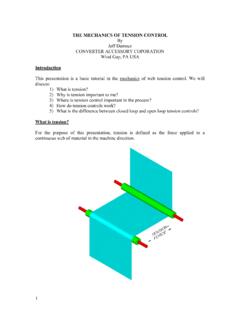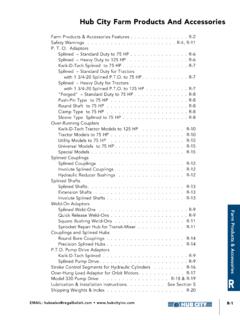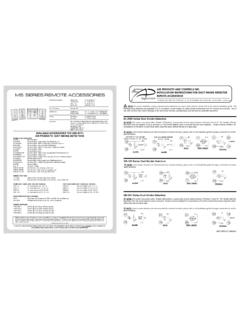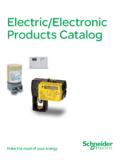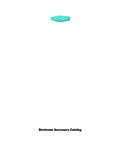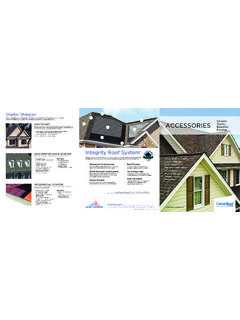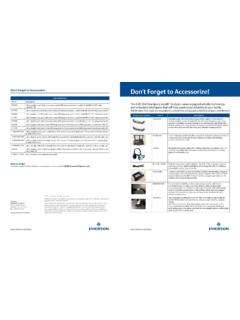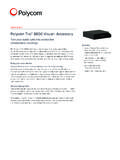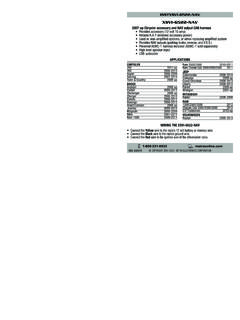Transcription of spreader roll white paper - Converter Accessory Corp
1 Converter Accessory Corp. Copyright all rights reserved Converter Accessory Corporation 201 Alpha Road Wind Gap PA 18091 **cannot be copied without the expressed written consent of the author** 1 WEB SPREADING By Jeff Damour Converter Accessory CORPORATION Wind Gap, PA USA Introduction This presentation is meant to be a basic tutorial into why spreader rolls are needed, their application and operating principals. Though there are many types of spreader rolls, this presentation will cover 5 basic types, including: 1) Crowned and Concave idler rolls pages 11 14 2) Grooved rolls pages 14 19 a. Rigid (metallic or hard rubber) grooved rolls b. Flexible (soft rubber surface) grooved rolls 3) Nip type (angled on each edge of the web) pages 19 - 21 4) Curved axis (bowed) rolls and bars pages 22 - 26 5) Expanding Surface rolls pages 26 - 32 a.
2 Slat expanders b. Rolls with polymer bands c. Continuous expanding rubber surface Definition of the term spreader Roll For the purpose of this presentation, spreader rolls are defined as web transport rolls (driven or idle) that cause cross machine direction web movement, as the web is traveling in the machine direction. There are three purposes of cross machine movement; 1) this action will remove wrinkles, 2) this action can separate slit widths, to prevent interleaving, 3) web width can be stretched a predetermined amount. This presentation will cover each type of spreader Roll and how they can be utilized in the applications listed above. Why do webs wrinkle? To understand why webs wrinkle and why spreader rolls work, it is necessary to understand the most important web handling principal when it comes to wrinkling.
3 This principal states: A web will seek to align itself perpendicular to a roll, in its entry span to that roll (see figure 11). The web must be in traction with the roll for this web handling principal to be true and effect the web behavior. In other words, if the material slips over the roll face then it can wander or remain in its current alignment with a roll not perpendicular to it. Converter Accessory Corp. Copyright all rights reserved Converter Accessory Corporation 201 Alpha Road Wind Gap PA 18091 **cannot be copied without the expressed written consent of the author** 2 The reason webs wrinkle can be summed up in one expression lateral compressive forces. This presentation will seek to explain why lateral compressive forces occur, how to avoid them and spreader rolls that will remove wrinkles when these lateral compressive forces cannot be avoided.
4 Causes of Web Wrinkles In a perfect world, webs would be flat, without gauge band variations. Roll stock would always be wound with the perfect tension from the core through the full roll diameter. Processes would always be run at the perfect tension for each material and operation. All converting processes would be run in humidity-controlled environment, where temperatures never vary. All rollers would be parallel from unwind to rewind and balanced perfectly. There would be no machine vibration. There would be no long, unsupported web lengths. You get the idea. Unfortunately we do not live and work in a perfect world. One or a combination of any or all of the circumstances listed above will cause wrinkles. Web characteristics that will cause wrinkles: Gauge band variations (thickness variations) across web width, cross machine direction (figure 1) will cause wrinkles because tensions will vary across the web width.
5 These tension variations will cause tensile stress in the thicker areas and compression in thinner areas. This compression causes wrinkles. Tight side/loose side (figure 2). This condition is caused by the web being longer (linearly), on one side than the other, in the machine direction. If you were to lay flat an extremely long length of material in this condition under no tension, it would actually arc instead of being straight. This condition again creates tensile stress on the tight (short) side and compression on the loose (long) side, causing wrinkles. Baggy center, tight edges (figure 3). The web being longer in the center than the two edges, in the machine direction, causes this condition. If you were to lay material with this characteristic, flat, then you would see ripples or bubbles develop in the center while the edges were straight and flat.
6 In a converting process, webs with this material characteristic will wrinkle because most of the tension that is typically evenly distributed across the full width is mostly distributed on the shorter (machine direction) edges than longer (machine direction) center. Tensile stress on the edges will create lateral compression in the center of the web, causing wrinkles. Baggy edges, tight center (figure 4). The web being longer on the edges than the center, in the machine direction, causes this condition. If you were to lay material with this characteristic, flat, then you would see ripples or bubbles develop on the edges while the center was straight and flat. In a converting process, webs with this material characteristic will wrinkle because most of the tension that is Converter Accessory Corp.
7 Copyright all rights reserved Converter Accessory Corporation 201 Alpha Road Wind Gap PA 18091 **cannot be copied without the expressed written consent of the author** 3 typically evenly distributed across the full width is mostly distributed on the shorter (machine direction) center than longer (machine direction) edges. Tensile stress in the center will create lateral compression on the edges of the web, causing wrinkles. Poorly wound roll stock (parent roll) will cause wrinkles for the following reasons: a) Tension too high (figure 5), especially at the outer layers of the roll can cause inner layers to buckle. This is evident by viewing the end of the roll and observing a starring effect. In extreme cases, the core may even be collapsed.
8 This roll characteristic will cause the web to be wrinkled before it enters a converting process. b) Tension too low (figure 6) will cause the roll stock to be wound loose. Layers will slip on each other, making tension control ineffective or intermittent. This will cause the material to neck down (under tension) and expand (when tension is low or nonexistent). These compression and decompression forces will create web wrinkles. Converter Accessory Corp. Copyright all rights reserved Converter Accessory Corporation 201 Alpha Road Wind Gap PA 18091 **cannot be copied without the expressed written consent of the author** 4 Converter Accessory Corp. Copyright all rights reserved Converter Accessory Corporation 201 Alpha Road Wind Gap PA 18091 **cannot be copied without the expressed written consent of the author** 5 Machine characteristics that will cause wrinkles: Idler roll buckling or deflection (figure 7) will cause wrinkles because the web will actually deflect out of its normal running plane at different intervals across the web width.
9 This out of plane condition will occur wherever the greatest amount of deflection (usually the center) is in the idler roll. When roll deflection occurs, webs will wrinkle because they will compress toward the deflection point. Air entrainment in webs (figure 8) as they flow over rolls will cause wrinkles. Air entrainment will create slippage between the web and the roll face. If this slippage occurs, then the web is not in traction with the roll. For the web handling principal, that a web will seek to be perpendicular to a roll in the entry span to that roll, to effect web behavior, it must be in traction with the roll. If the web is not in traction with a roll, it can wander or stay aligned with that roll to which it is not perpendicular. Webs that wander will wrinkle because the web will move to be perpendicular to the next roll with which it has traction.
10 This movement to remain perpendicular will cause a strain on the web. Air entrainment problems can be detected by viewing idler rolls that stop rotating during the converting process. Also, if wear spots are seen across idler roll faces, air entrainment is probably the problem. Machinists bluing dye can be applied to idler rolls where air entrainment is suspect to detect wear spots. Material roll buckling or deflection (figure 9). If the parent roll deflects on its support mechanism (air shaft, mechanical chucks or core cones mounted on a simple steel through shaft) then compressive forces will cause the material roll to buckle and wrinkle before the web enters the converting process. Varying tension through several different types of processes in one converting line (figure 10) will cause wrinkles.
